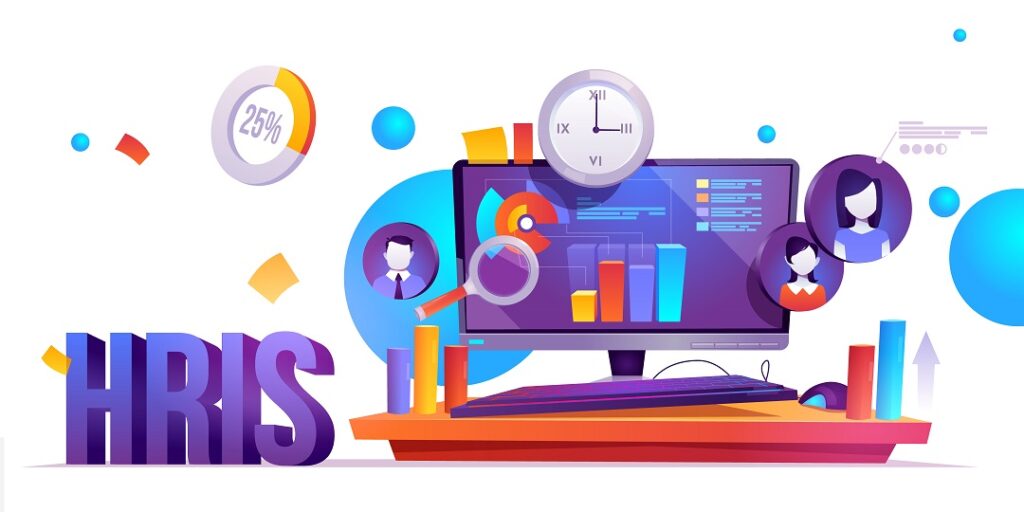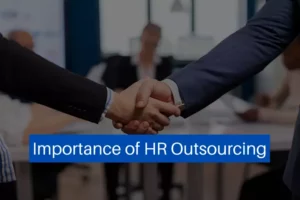Human Resource Information System
The human resource information system (HRIS) prevents organizational units from becoming isolated, provides a mechanism for exchanging information and ideas across organizational boundaries, allowing multiple perspectives to be considered when making decisions, and provides coherence and direction to the entire organization.

An IS enables the search for shared information, which may subsequently be processed or modified according to a specific plan or program and under specific conditions to generate new information, much like any other raw material. Information is capable of repaying far more than what was paid to obtain it in the first place. The reusable nature of information denotes another fundamental characteristic of information systems: the ability to share information over time without losing its value or efficacy.
The most useful capability of an information system is that it allows information to be accessed from different sources, resulting in knowledge development.
When a specific investment, such as the purchase of a database, an electronic journal, or a book, is made, the acquired item is downloaded into a system and made available to tens or even hundreds of end-users, added value is created. Until recently, information technology (IT) was confined to sending emails, announcements, and newsletters, and the idea of incorporating IT into other aspects of business operations was seen to be impossible or unneeded.
The increased sophistication of specialized information systems within the conventional functional domains of the company was a critical concern in management information systems during the 1980s.
One such system is the Human Resource Information System (HRIS), which has recently become important for the operations of large organizations’ people departments. Rather than a forecasting, analytical, and decision support system, most firms used HRIS for personnel functions in 1986 to relieve the administrative labor of record-keeping and pay administration.
The low degree of HRIS utilization can be attributed to a variety of factors, including organizational size, culture, strategy, power and politics, and IT expertise. A fully employed HRIS, on the other hand, can result in managing human resources, particularly for training and development reasons, as well as planning, controlling, monitoring, and inventorying individuals and skills.
HRIS is a system that collects, maintains uses, analyzes, retrieves, and disseminates corporate resources information. Users, managers, and employees who are uninformed of the HRIS system's value-added potential fail to build and deploy the system, hence user education is vital.
An issue emerges here: can having a technologically-based HR system in an organization, as well as the necessity for teaching personnel about it, justify the need by giving any meaningful output, or in other words, value to the organization and its users? One solution is to reduce HR professionals' workload by relieving them of many routine paper-handling activities, allowing them to participate more in strategic decision-making.
One of the most distinctive ways of increasing the value of information is to provide access to it through hierarchical organization and networks. Information, unlike other assets in a company, maybe utilized and reused because of the nature of information systems.
Another distinguishing aspect of an information system is that the amount of shared information that may be used is limited in comparison to the investment made in it. In today’s world, HR work needs to shift its focus from management and overwork to the use of information technology to exploit employee development and improve their performance.
In today's world, the HR department must alter its focus from being more administrative and transactional to harnessing the growth of staff and improving their performance utilizing information technology.
Objectives of HRIS
- The HR information system should offer data in the most cost-effective manner possible. Information has value, but it also has a cost. The information provides benefits in the form of better decision-making and fulfillment of other requirements. The cost of information is measured in terms of the time it takes to acquire, process, store, and retrieve data.
- The HR information system should give data in such a way that it aids in the improvement of one or more decisions, i.e., it should cause a better decision to be made and a less good one to be rejected. If the identical judgment could be made without it, information is of little use. As a result, accurate, timely, and relevant information is required.
- Aside from decision-making, HR information systems should provide HR data that is required by statutory provisions or other organizations such as industry associations, research groups, and so on. Furthermore, internal employees may make ad hoc inquiries on their present status, such as their leave account, overtime worked, provident fund account, and so on.
Visit our social media pages for more interesting ideas and information about Human Resources and Payroll. The links are given below:
https://www.facebook.com/lingueeGlobal
https://www.instagram.com/lingueeglobalsolutions/




Somebody essentially assist to make significantly posts I’d state. That is the first time I frequented your website page and up to now? I surprised with the research you made to create this actual put up extraordinary. Great job!
Throughout this grand design of things you actually secure a B+ just for effort and hard work. Exactly where you lost me personally ended up being in your specifics. As it is said, details make or break the argument.. And it couldn’t be more accurate at this point. Having said that, let me tell you precisely what did do the job. Your writing is actually quite persuasive and that is probably the reason why I am making the effort in order to comment. I do not make it a regular habit of doing that. Next, whilst I can certainly see the leaps in logic you come up with, I am not necessarily sure of exactly how you seem to connect the ideas which inturn make the final result. For right now I will subscribe to your issue however wish in the foreseeable future you connect your dots much better.